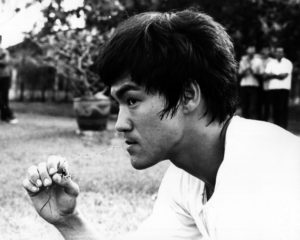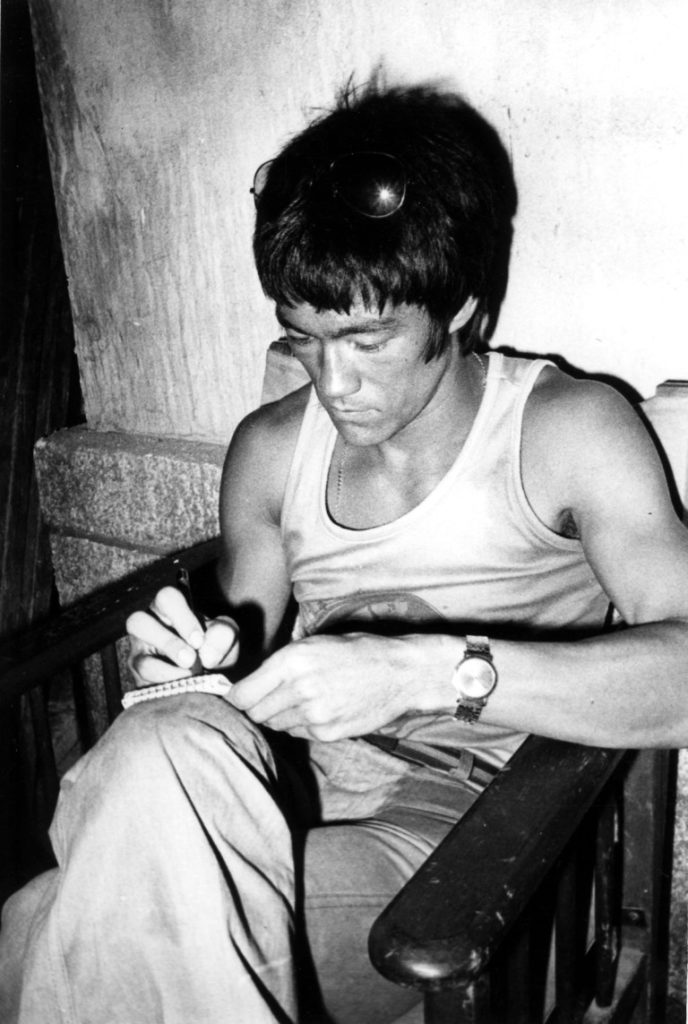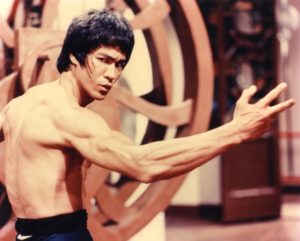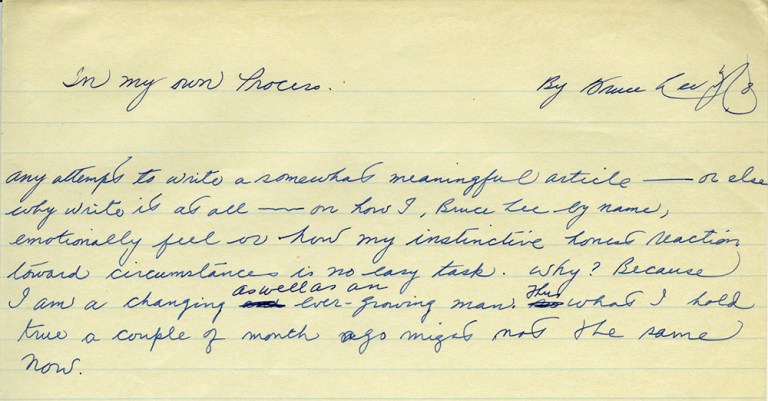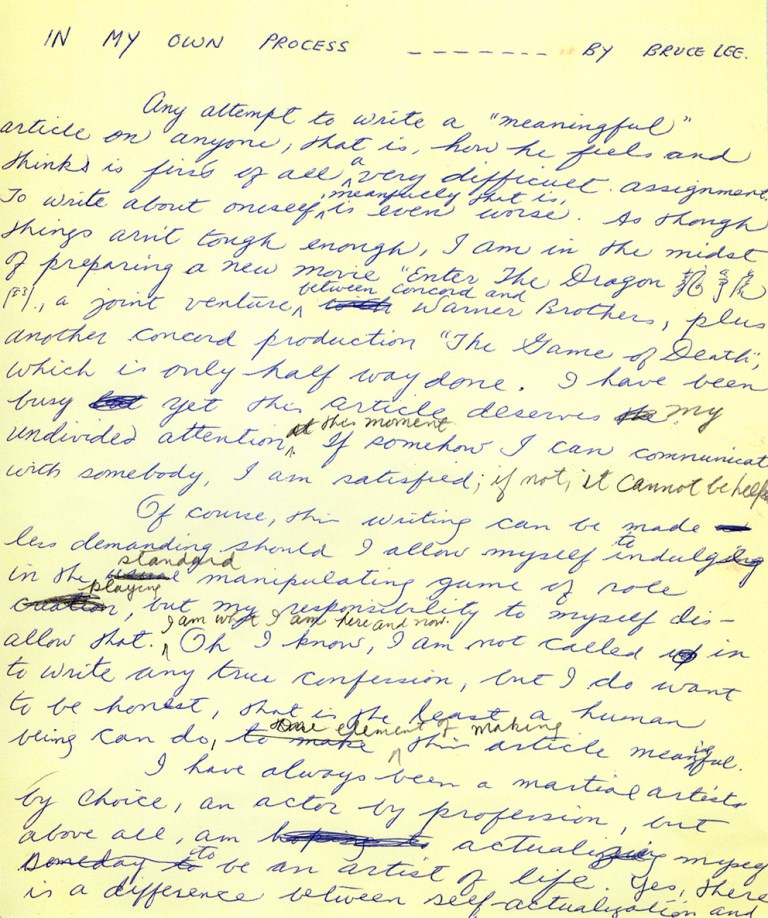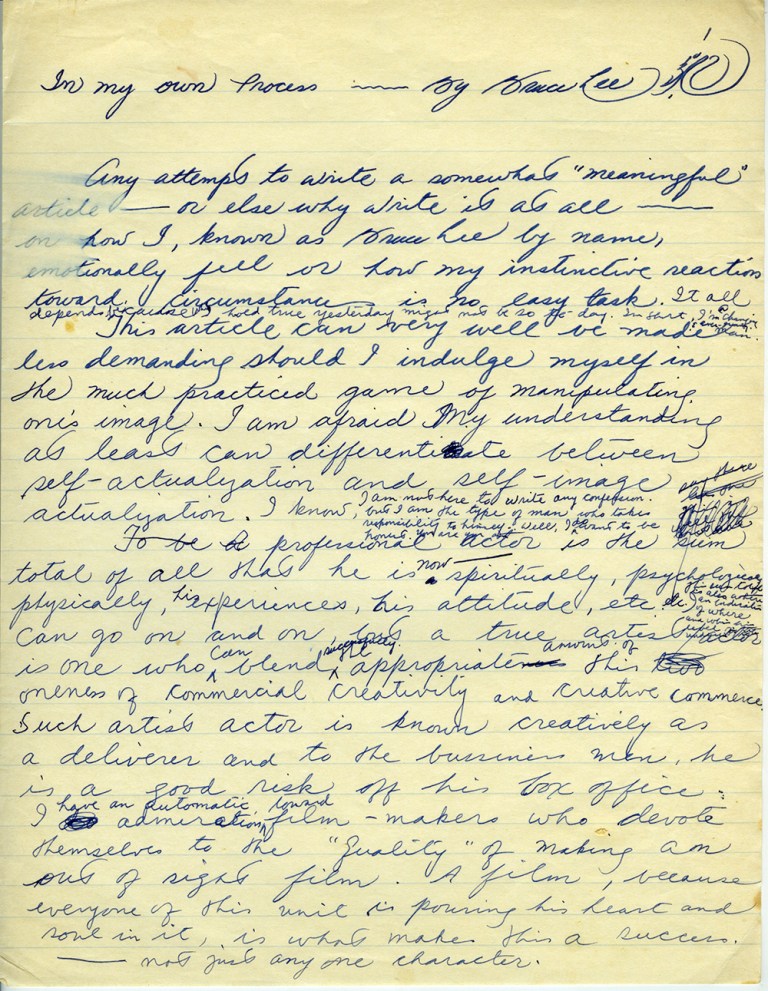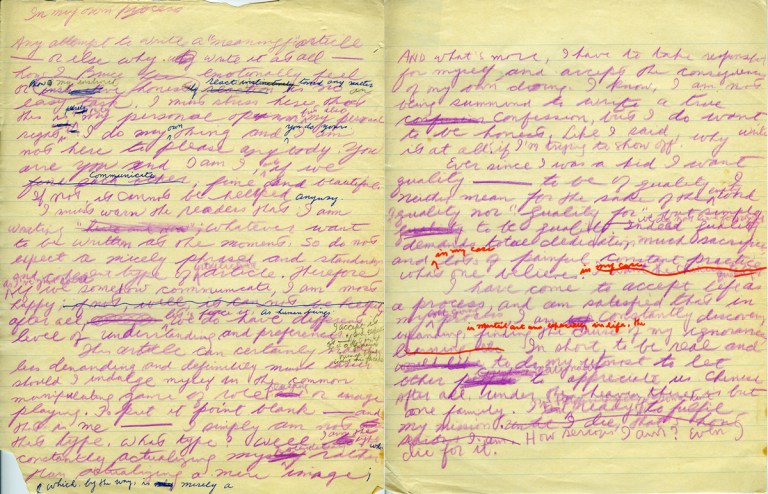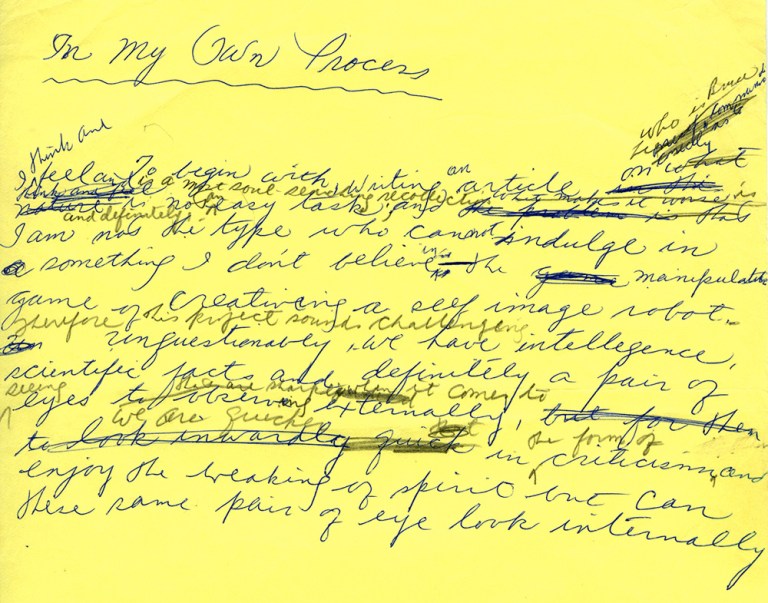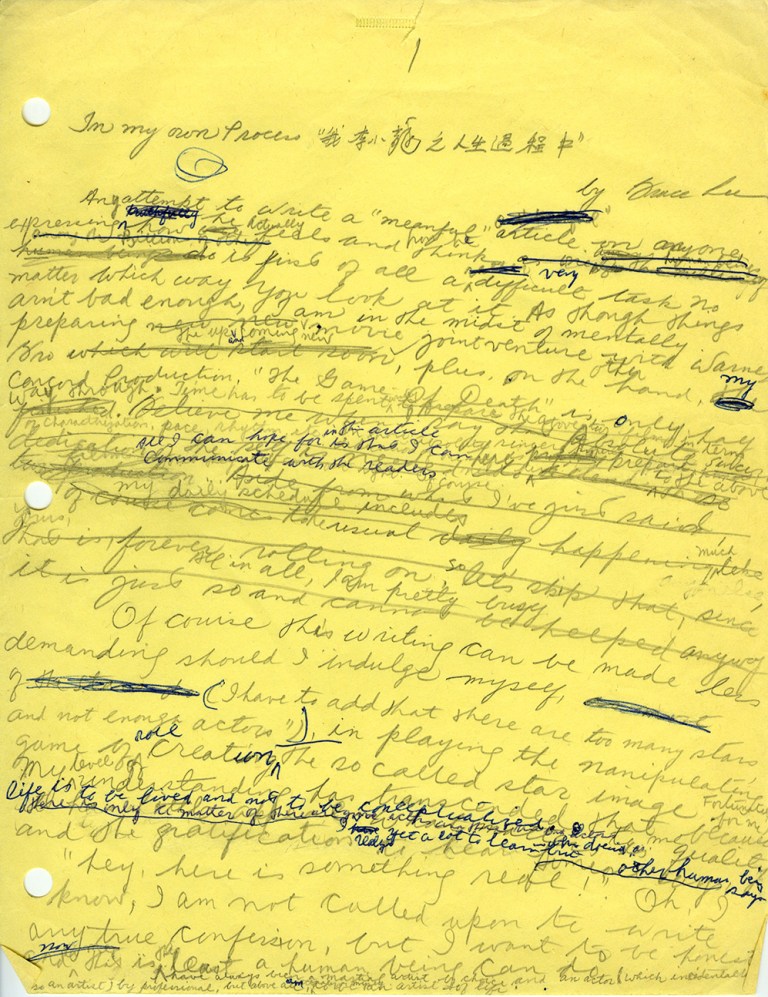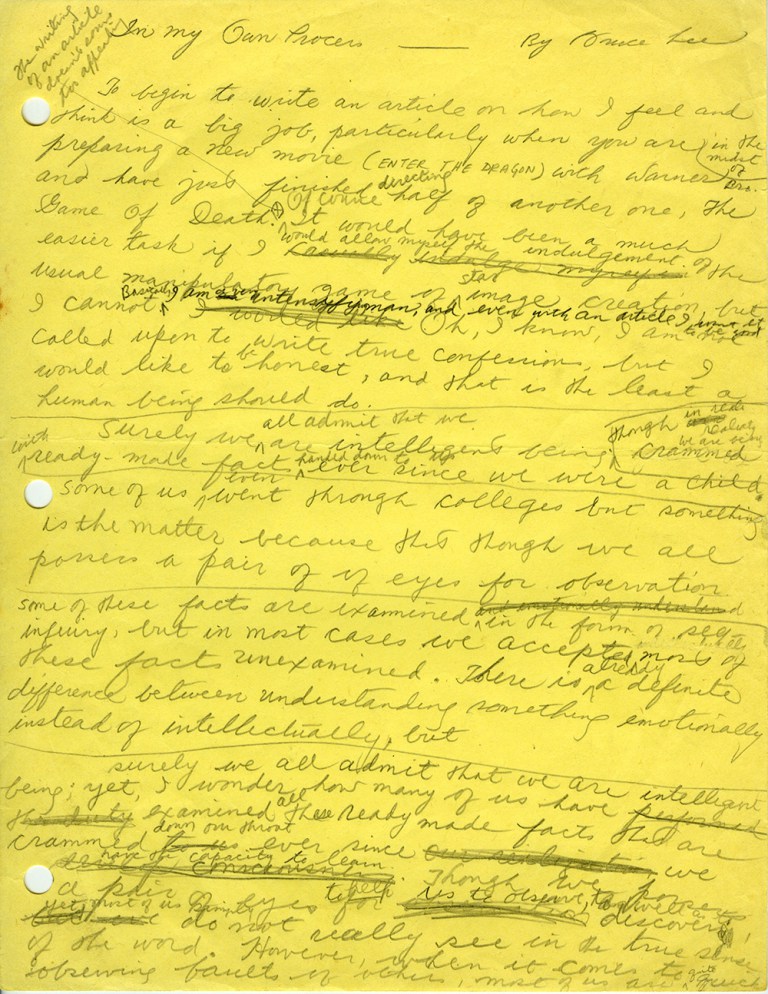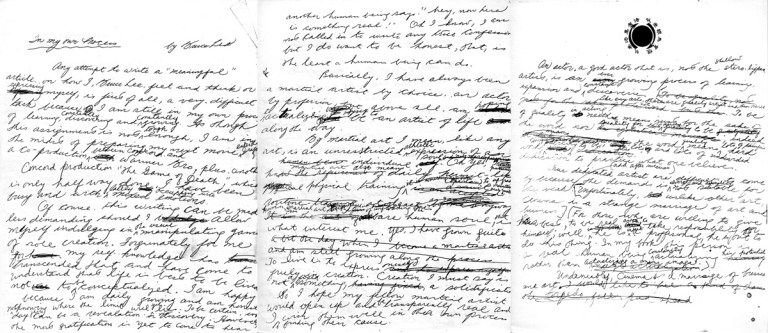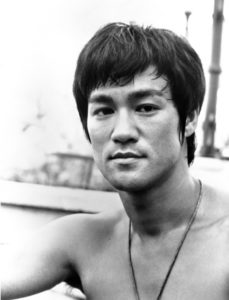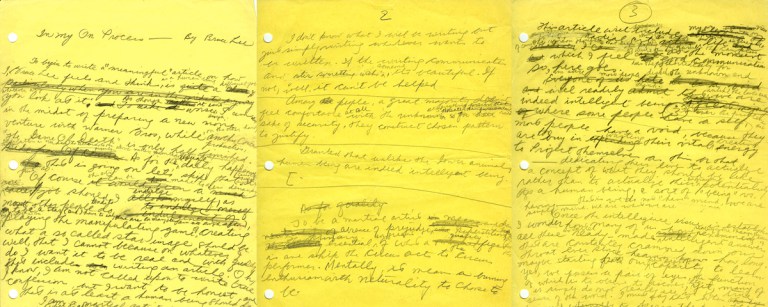Bruce Lee’s Never before Revealed Letters to Himself about Authenticity, Personal Development, and the Measure of Success
INSPIRATIONAL, 22 Jan 2018
Maria Popova | Brain Pickings – TRANSCEND Media Service
“Where some people have a self, most people have a void, because they are too busy in wasting their vital creative energy to project themselves as this or that, dedicating their lives to actualizing a concept of what they should be like rather than actualizing their potentiality as a human being.”
“This is the entire essence of life: Who are you? What are you?” So wrote young Leo Tolstoy in his diary of moral development. Bruce Lee (November 27, 1940–July 20, 1973) was around Tolstoy’s age when he turned to this central question of existence more than a century later and approached it with the same subtleness of insight and sincerity of spirit with which he approached all of life.
Revered by generations as the greatest martial artist in popular culture, Lee is increasingly being recognized as the unheralded philosopher that he was, from his famous metaphor for resilience to his recently revealed unpublished writings on willpower, imagination, and confidence. But his most intently philosophical work was the personal credo statement he wrote in the final year of his life, at the age of thirty-one, as a series of letters to himself under the heading “In My Own Process.” The piece underwent nine drafts, never finished and never published, which I’m delighted to share for the first time with special permission from Lee’s daughter, Shannon Lee, and the Bruce Lee Foundation.
The timing of “In My Own Process” is also significant, for Lee began writing it at a pivotal point in his life. After years of being sidelined by the Hollywood studio system, which continued to cast Caucasian actors to play Asian lead characters, Lee finally got his big break and was cast as the lead in Enter the Dragon, the script for which he helped write. But when Warner Brothers pushed to cut out all the philosophy and turn the film into a mindless action movie, Lee refused to show up on set in protest — he firmly believed that the kung fu was merely the vehicle for the deeper philosophical message, rather than the philosophy being a distraction from the kung fu, as Warner Brothers implied.
Well aware that his principles could cost him the fulfillment of his lifelong dream, he stood his ground. After a two-week standstill, the studio relented and let Lee keep the philosophical elements, so production began.
In the midst of this busiest and most tumultuous period of his career, Lee made deliberate time for self-reflection in drafting his credo. It was in these letters to himself, written in his third language over the course of several months on a colorful variety of stationery, that he arrived at the concept of being an “artist of life.” In them, he examines with great simplicity and wisdom some of the most elemental questions of existence. Decades before the Harvard psychologist Dan Gilbert made his memorable assertion that “human beings are works in progress that mistakenly think they’re finished,” Lee considers with acute self-awareness the mutability of what we experience as the “self.” Echoing the poet Laura Riding’s conviction that “nothing is really important but being oneself,” he maintains through the various revisions that all knowledge is self-knowledge — the seedbed of his oft-cited assertion that “the greatest help is self-help” — and that personal authenticity is the object of life and the only real measure of success.
In the first draft, he writes:
Any attempt to write a somewhat meaningful article — or else why write it at all — on how I, Bruce Lee by name, emotionally feel or how my instinctive honest reaction toward circumstances is no easy task. Why? Because I am a changing as well as an ever-growing man. Thus what I held true a couple of months ago might not [be] the same now.
In the second draft, after relaying the difficulty of conducting this self-examination in the midst of his grueling work schedule, he insists on the importance of personal authenticity above all else and considers the vital difference between what Hannah Arendt called being vs. appearing and Kahlil Gibran contrasted as the seeming self vs. the authentic self. Lee writes:
Of course, this writing can be made less demanding should I allow myself to indulge in the standard manipulating game of role playing, but my responsibility to myself disallows that… I do want to be honest, that is the least a human being can do… I have always been a martial artist by choice, an actor by profession, but above all, am actualizing myself someday to be an artist of life. Yes, there is a difference between self-actualization and self-image actualization.
In the third draft, he considers our chronic fear of the unfamiliar in a sentiment of particular poignancy at this political moment:
Among people, a great majority don’t feel comfortable at all with the unknown — that is anything foreign that threatens their protected daily mould — so for the sake of their security, they construct chosen patterns to justify.
In the fourth draft, Lee turns to the perpetual evolution of personhood, which renders the idea of static self-definition unnecessary and unhelpful:
I have come to accept life as a process, and am satisfied that in my ever-going process, I am constantly discovering, expanding, finding the cause of my ignorance, in martial art and especially in life. In short, to be real…
In the fifth draft, the revisits the inherent paradox of the quest to define himself and his process:
I don’t believe in the manipulation game of creating a self image robot.
In the seventh draft, he echoes Walt Whitman’s incantation to “re-examine all you have been told at school or church or in any book,” and writes in a passage of especial relevance to our present epidemic of unquestioned “alternative facts”:
Surely we all admit that we are intelligent beings, though in reality we are being crammed with ready-made facts handed down to us ever since [childhood]. Some of us even went through college but something is the matter because … some of these facts are examined in the form of self-inquiry, but in most cases we accept most of these facts unexamined.
[…]
We possess a pair of eyes to help us to observe as well as to discover, yet most of us simply do not see in the true sense of the word. However, when it comes to observing faults in others, most of us are are quick to react with condemnation. But what about looking inwardly for a change? To personally examine who we really are and what we are, our merits as well as our faults — in short, to see oneself as [one] is for once and to take responsibility [for] oneself.
In the penultimate draft, he turns from the intellectual dimension of self-knowledge to its emotional rewards:
I am happy because I am daily growing and honestly not knowing where the limit will yet lie. To be certain, every day can be a revelation or a new discovery. However, the most satisfaction is yet to come to hear another human being say, “Hey, here is something real.”
He touches on the deeper significance martial art held for him as a spiritual practice and not the merely the decorative performance Hollywood made it out to be:
By martial art I mean, like any art, an unrestricted expression of our individual soul… The human soul is what interests me. I live to express myself freely in creation.
Lee’s reflection on what it means to be a great actor applies equally to every art, as well as to the art of life itself:
An actor, a good actor that is, not the shallow stereotyped artist, is an ever-growing process of learning, expansion and constant discoveries… To be of quality in acting means … lots of painful hard work and lots of undivided dedication to practicing what one believes.
In the ninth and last draft — which is still a draft, for his untimely death intercepted the completion of the piece — Lee reassembles the mosaic of the intellectual, spiritual, and emotional dimensions of selfhood, and returns to his central ethos of personal authenticity:
Where some people have a self, most people have a void, because they are too busy in wasting their vital creative energy to project themselves as this or that, dedicating their lives to actualizing a concept of what they should be like rather than actualizing their potentiality as a human being, a sort of “being” vs. having — that is, we do not “have” mind, we are simply mind. We are what we are.
______________________________________________
 Brain Pickings is the brain child of Maria Popova, an interestingness hunter-gatherer and curious mind at large obsessed with combinatorial creativity who also writes for Wired UK and The Atlantic, among others, and is an MIT Futures of Entertainment Fellow. She has gotten occasional help from a handful of guest contributors.
Brain Pickings is the brain child of Maria Popova, an interestingness hunter-gatherer and curious mind at large obsessed with combinatorial creativity who also writes for Wired UK and The Atlantic, among others, and is an MIT Futures of Entertainment Fellow. She has gotten occasional help from a handful of guest contributors.
Go to Original – brainpickings.org
DISCLAIMER: The statements, views and opinions expressed in pieces republished here are solely those of the authors and do not necessarily represent those of TMS. In accordance with title 17 U.S.C. section 107, this material is distributed without profit to those who have expressed a prior interest in receiving the included information for research and educational purposes. TMS has no affiliation whatsoever with the originator of this article nor is TMS endorsed or sponsored by the originator. “GO TO ORIGINAL” links are provided as a convenience to our readers and allow for verification of authenticity. However, as originating pages are often updated by their originating host sites, the versions posted may not match the versions our readers view when clicking the “GO TO ORIGINAL” links. This site contains copyrighted material the use of which has not always been specifically authorized by the copyright owner. We are making such material available in our efforts to advance understanding of environmental, political, human rights, economic, democracy, scientific, and social justice issues, etc. We believe this constitutes a ‘fair use’ of any such copyrighted material as provided for in section 107 of the US Copyright Law. In accordance with Title 17 U.S.C. Section 107, the material on this site is distributed without profit to those who have expressed a prior interest in receiving the included information for research and educational purposes. For more information go to: http://www.law.cornell.edu/uscode/17/107.shtml. If you wish to use copyrighted material from this site for purposes of your own that go beyond ‘fair use’, you must obtain permission from the copyright owner.
